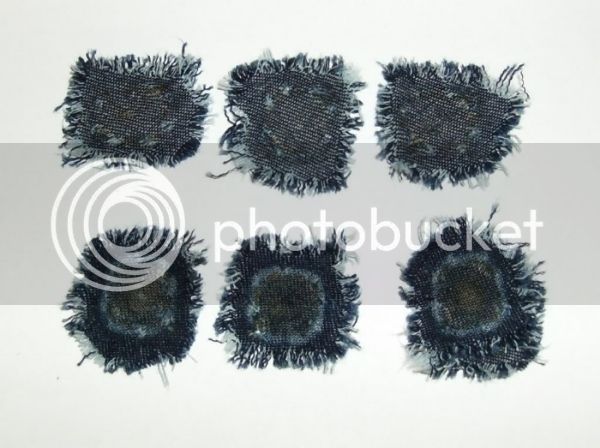Cpl. Ashencheeks
40 Cal.
- Joined
- Mar 31, 2014
- Messages
- 336
- Reaction score
- 15
I just bought some pillow ticking from Joann's Fabrics and the girl at the bolt counter asked me what it was for.
Normally I am little annoyed when someone asks me what I getting something for concerning some little project I might have going on, but I told her what it was going to be used for and proceeded with a little charade or mime action using a muzzleloading rifle and ramrod motion.
Now that I think back at it, I shutter to think of what this may have looked on a security camera.
Anyway, after I bought this stuff, I also bought some thicker ticking at a big box store nearby.
I washed it in a washing machine to get the sizing out, but realize I probably should have washed it by hand, because of frayed threads.
I plan to use this with homemade Moose juice in my .45 rifle and pistol.
Now for those of you who cut at the muzzle, how wide are your strips that you carry and would you have any recommendations on a good patch knife.
I think I would prefer something like the carbon steel similar to what is found in a Opinel folder.
For those that pre-cut patches what sizes would be good for. .45 and .54.
Cutting at the barrel probably means more consistency but can waste material.
Square patches would seem to center better than struggling with finding the center store-bought round patches.
So there seems to be a trade-off on each technique.
So I guess I would really like a patch knife recommendation, and also would like to know what size squares would be used for different calibers.
I assume squares in 1.5" for .54, and maybe 1.25" for .45 and .50 and possibly .75" for .32 calibers.
I would kind of want the option for both pre-cut and muzzle cutting.
Normally I am little annoyed when someone asks me what I getting something for concerning some little project I might have going on, but I told her what it was going to be used for and proceeded with a little charade or mime action using a muzzleloading rifle and ramrod motion.
Now that I think back at it, I shutter to think of what this may have looked on a security camera.
Anyway, after I bought this stuff, I also bought some thicker ticking at a big box store nearby.
I washed it in a washing machine to get the sizing out, but realize I probably should have washed it by hand, because of frayed threads.
I plan to use this with homemade Moose juice in my .45 rifle and pistol.
Now for those of you who cut at the muzzle, how wide are your strips that you carry and would you have any recommendations on a good patch knife.
I think I would prefer something like the carbon steel similar to what is found in a Opinel folder.
For those that pre-cut patches what sizes would be good for. .45 and .54.
Cutting at the barrel probably means more consistency but can waste material.
Square patches would seem to center better than struggling with finding the center store-bought round patches.
So there seems to be a trade-off on each technique.
So I guess I would really like a patch knife recommendation, and also would like to know what size squares would be used for different calibers.
I assume squares in 1.5" for .54, and maybe 1.25" for .45 and .50 and possibly .75" for .32 calibers.
I would kind of want the option for both pre-cut and muzzle cutting.






